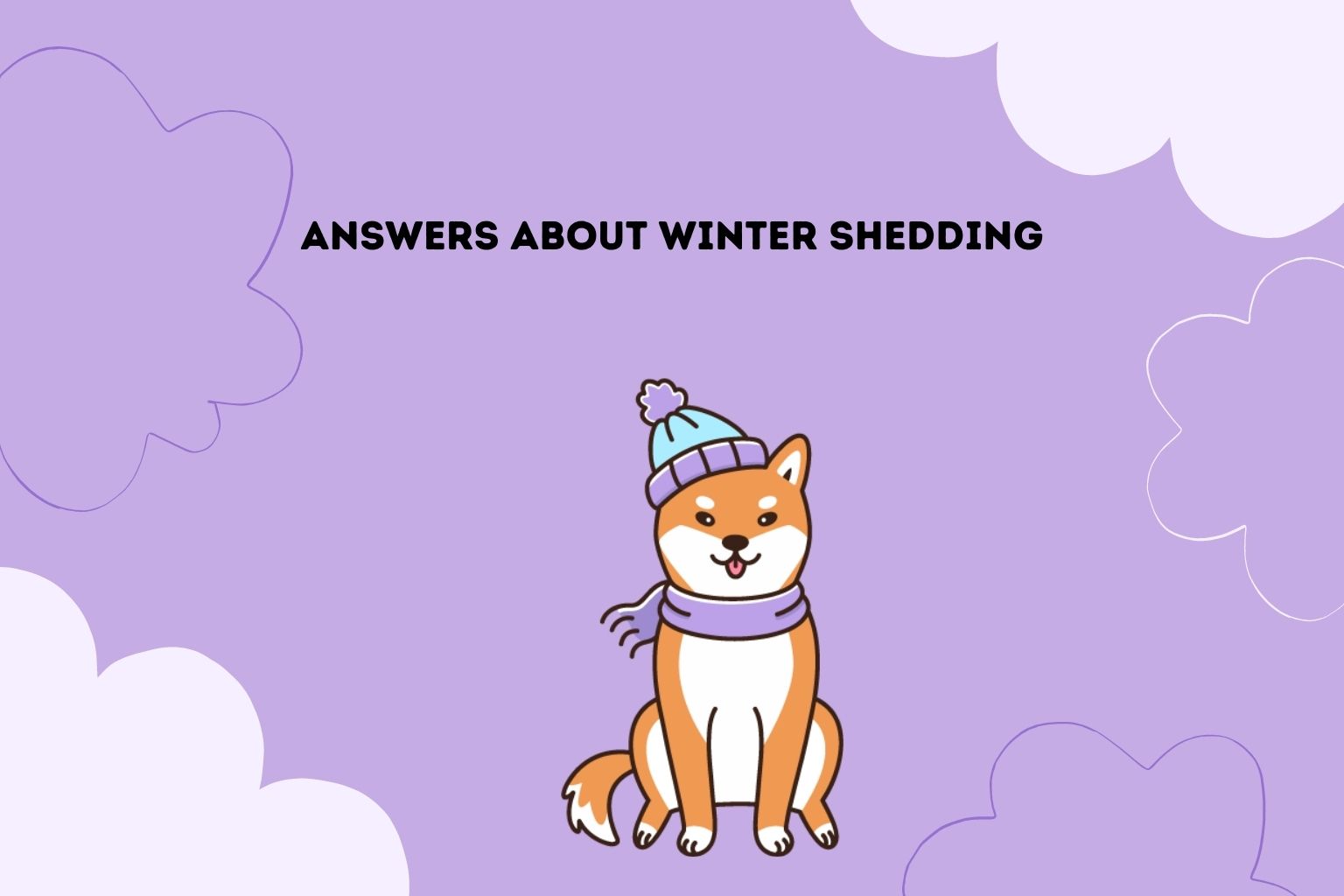I’m a pretty laidback person and don’t get too wired up if something breaks the usual routine, but I do get a little bit upset if either of my dogs suddenly busts out in off-season shedding. For example, if Janice or Leroy seem to be losing a lot of hair in July, I worry. Where we live, they should have long ago lost any extra winter coat and should not be growing in anything new for a few months. And winter shedding? Well, that’s not something that is so troubling…at least not most of the time.
Because winter has made an official appearance here in our corner of the world, I decided to take a look at the issue of winter shedding. It is not, as so many people think, a non-shedding season. In fact, the AAHA even agrees, saying that “Cats and dogs that are indoors most of the time will shed more lightly and regularly throughout the year because their temperature and light are controlled. But if your cat or dog spends most of his or her time outdoors, you’ll likely notice quite a bit more shedding each spring and winter.”
Shedding is a hormonal change and also something cued by changing light, shorter and colder days tell a dog that it is time for the summer coat to go and for a heavier and thicker coat to sprout. This is often something that surprises pet owners who wonder why their dog might be losing fur just as the summer officially ends, and even as the first snow falls occur.
Again, many are pretty astonished that their dog is losing a lot of fur as snow remains on the ground many months later. Why, they wonder, if there are still risks of ice storms and freezing weather should the dog be shedding?
Well, there are a lot of answers and issues where winter-time shedding is concerned, and in this article, we are going to dig deep into this topic and also look at a handful of dog breeds that can allow you to live an (almost) shed-free lifestyle.
First Things First…Dogs Shed
Now, I don’t want to start a huge debate or argument with dog experts, but according to science, there is really no such thing as dog that sheds absolutely no fur or dander. The AKC has this to say on the matter: “Some breeds have hypoallergenic coats that produce much less dander, which is attached to the hair and causes most allergens in humans.”
That is why (a bit later) we’ll look at a list of top dog breeds for those who are hoping to keep housekeeping and/or allergy symptoms to a minimal level. However, before we do that, let’s consider the terms shedding and hair loss because they are not the same thing, and winter can be a time when a dog sheds and/or suffers hair loss due to medical issues.
So, normal shedding is done by all dogs (with the exception of hairless dogs such as the American Hairless Terrier). They shed all year long, but many breeds blow their coats twice yearly. This means they lose a lighter summer coat in exchange for a heavier winter one, and then reverse course and blow out the heavier coat in order to enjoy more comfort in the heat of the year.
Normal shedding then, happens all year, and as one expert said, “normal shedding is the loss of the undercoat, with some regular loss of fur. Normal shedding will occur year round, and will be visible on your clothes, sofa, and around the house”. In my home, the fine and needle-like hairs belonging to Janice and Leroy (my boxers) can appear in the darndest places. In fact, at least once each year, I have to bust out the tweezers because one of their single strands of coarse fur has slipped into the skin on the sole of my foot, just like a sliver!
That is normal shedding, and it is a cycle not unlike the way human hair works – growing from a follicle and then falling out due to any number of factors. Normal shedding also features “seasonal” shedding or when a dog blows their coat twice a year. This happens all over the body, and though it might not happen entirely evenly, when the process is finished, the dog’s coat is evenly balanced and full.
How Normal Shedding Works
I like to get all technical and “sciency” from time to time, and you should prepare yourself because I am about to go there now. Why? Because it is a good idea to understand the different phases of your dog’s hair growth in order to better manage shedding.
Firstly, most dogs have two layers to their coats – a overcoat and the dense and insulating undercoat. Now, not all dogs have noticeable layering to their fur, but most do feature the double coats that come and go, changing with the seasons and the dog’s hormones.
However, your dog’s fur also grows in three stages:
- Anagen
- Catagen
- Telogen
Anagen is just the growth cycle, catagen is when fur is in the resting or transitional stage, and telogen is when shedding occurs. Telogen may be the more dominant phase during seasonal shedding, but dogs that spend most of their lives indoors may have balanced and ongoing cycles of hair growth and shedding all year long.
Of course, the level of shedding is also going to vary based on the dog’s breed. As I noted, not all dogs have double coats even though all dogs shed, so certain breeds are less likely to have spikes of shedding during peak shedding seasons.
Just try to keep in mind that there are many dogs that have excess shedding, and it can happen at any time. You might first notice it because the house seems to be coated with a lot of fur at all times. It is on the furniture, the curtains and bedding, the carpeting and your clothes, and you feel like you’ll go nuts if you sit down and find yourself covered in fur within seconds.
We’ll look at ways to deal with excess shedding a bit later. For now, we need to also consider when it is NOT shedding that’s causing the mess.
Related Content:
7 Tips for Dealing with Shedding
5 Best Dog Hair Blowers
16 Best Dog Boards
Fur Loss v. Shedding
On the opposite side of this coin, however, is hair loss. This is rarely even or balanced in its appearance, though it may seem to start out that way. It is distinguished from shedding by appearing more in patches or in isolated areas of the body. We can call this fur loss or unusual hair loss, and it is often a sign of a health issue or underlying trigger that is causing the fur to fall out.
When your dog is going through normal shedding, the texture of the hair doesn’t change and the density or evenness of the coat remains intact. Signs that your dog is undergoing hair loss include:
- Fur is falling out in uneven patterns
- Fur is dry and/or brittle
- Fur breaks
- There are areas of very thin fur or even baldness
- Hair has been lost in clumps rather than strands
- The dog’s skin is tender to the touch or the dog reacts badly if you touch the area of hair loss
- Skin issues appear, such as rash, redness, oozing, and so on
Even just one of these symptoms is a sign that you should get your puppo to the vet to have their skin and fur checked. The reasons behind such issues are many, and some of the most common causes behind excessive hair loss (rather than excessive shedding) can include:
Allergy
Your dog may be allergic to dust mites or other pests that are biting them and causing reactions that trigger hair loss. They could also be reacting to the new dog shampoo or other products you are using, or even a new dog bed or blanket. If you have switched out the household cleaners you use, this too could be causing hair loss due to allergic reaction, and particularly in the more closed up environment of a home in the winter months.
Dogs can also show an allergic reaction to medications or foods through hair loss, and other symptoms. First and foremost, take the dog to the vet for a checkup, and if your vet says it is likely to be an allergy causing the issue, you’ll need to sit down and workout what has triggered the reaction.
Ask yourself if you changed foods or treats, added medications, changed anything inside of the home or a vehicle (if the dog rides with you) including any cleansers or other products, changed pet products like shampoos or flea products, and so on. You might also scour the home to see if you have any pests such as fleas, mites, ants or other biting pests that could also have caused this reaction.
Alopecia
Humans experience this condition, too. It causes rapid and rather dramatic hair loss and is called cyclic follicular dysplasia or seasonal alopecia. You often see it along the flanks or sides of the dog – the area stretching from the hips up to the ribs. The skin frequently becomes dark and discolored after the hair loss occurs.
It is caused by a lack of adequate sun exposure, a common problem in the winter months, and there are specific breeds that are prone to it. These include my own boxers, as well as terriers of all kinds, bulldogs, Doberman pinschers, labs, and others. Yet, any dog can experience it and when treated, the hair will return in around 90 days or so.
Treatment is usually done with lighting devices that cue the creation of melatonin in the dog’s skin. You may also be asked to supplement the dog’s diet with oral melatonin or bring them to the vet for injections. Fish oil can also be a good remedy, but the solutions used have to be decided on by your vet after analyzing the situation.
Anxiety and Stress
It is not at all unusual for a dog to start to lose their hair if they live with too much stress or anxiety. And as my readers already know, there are a lot of reasons that any dog may begin to feel anxious or stressed.
For example, when I was growing up, we had many dogs and rescues. One of them really hated the fact that we were having work done around the house one summer. The new kitchen cabinets and hardwood floors were really great looking, but this dog began to lose all of her hair and would whine or pant excessively when the carpenters arrived.
We had to actually have her stay in the peace and quiet of my grandmother’s home until the project was done.
If your dog has started to lose hair rather than simply experience bouts of shedding, take the time to consider if they are also showing signs of anxiety or stress. These include:
- Loss of appetite
- Digestive upset
- Sleeping a lot more
- Behaving aggressively towards people or other pets
- Trying to isolate themselves, such as hiding when this is not a normal behavior
- They attempt to escape
- They show signs of fear such as tucking their tails or acting very passive
- They lick and bite at themselves
So, if there have been some major changes in your household or there have been some stressful situations (a death in the immediate family, conflict and arguing, construction, and so on), don’t rule out stress as the cause for hair loss.
Hormones
As I already noted, hormonal changes are part of what cues seasonal shedding, but dogs can also have hormonal imbalances that lead to hair loss. Most commonly, this is due to the thyroid being imbalanced, and it is why hair becomes thin or brittle, or falls out altogether.
However, there are also typical hormonal imbalances such as too much or too little testosterone, progesterone or estrogen. For example, nursing mothers may lose their hair. If your dog is not nursing or pregnant, yet they are losing hair, it is entirely possible that hormones are to blame.
Diet
One of the first things to consider if you fear your dog is losing its hair rather than just going through a bout of excessive shedding is whether or not its diet is meeting its nutritional needs. Both dietary deficiency and dietary overabundance of specific nutrients may cause a dog’s hair to fall out. The simplest way to test for this is to have bloodwork done. The vet will go over many different factors as they try to assess the reasons, and if it is not allergies, stress or hormones, they’ll certainly do a blood test to check out dietary issues.
Skin Conditions
There is a rather substantial list of possible skin conditions that will cause hair loss, too. I, myself, lived through a summer of hell when one of the dogs picked up a ringworm infection and passed it to me. Ringworm is not a worm but a skin infection caused by a fungus. It takes its name from the remarkably round formation it makes on the skin of humans.
It itches like mad and I won’t soon forget the two circles of torture that appeared on the inside of my forearm that summer. The dogs both ended up with it, and they lost hair and had itchy skin lesions that needed treatment. The topical treatments did the trick, but we ended up having to use the cones of shame on both dogs to prevent them from licking off the formulas and itching the sores.
In addition to ringworm, your dog’s hair loss could be due to mange, dermatitis, mites, and any number of bacterial or fungal problems. A big indicator is that the areas of hair loss are very patchy with skin beneath being super tender, red and oozing or inflamed. Any skin conditions due to infections or similar irritants have to be treated for the fur to return.
Other Medical Issues
In addition to all that we’ve considered, your dog’s hair loss might also be due to kidney or liver disease, an immune system disorder, parasites, toxicity issues, cancer, Cushing’s disease, mental health issues that cue too much licking, sunburn and more. If hair loss begins outside of your dog’s usual pattern of shedding, and it is excessive, it may be medical. If the hair loss is accompanied by open sores, foot licking and chewing, face and ear rubbing, skin irritations, excessive amounts of scratching and itching, bald spots, and changes in fur texture, it is the vet who is needed – ASAP!
As I’ve said a few times before, the vet is the right resource when hair loss occurs as the possible causes are so many and you don’t want to just guess and get it wrong. After all, all of the shedding and hair loss is a pain to clean up, but the dog is also probably wildly uncomfortable and irritated by whatever is causing it.
When It Is Shedding, You Can Do A Lot to Minimize Issues
If, however, it is just excessive shedding (at any time of year), there are many things you can do to help your dog (and reduce time spent cleaning the house). These steps include:
- Daily grooming – Yes, it could be a real pain, but if you brush a dog every single day, you capture most of the hair that would be lost elsewhere in the home. And by removing the excess fur, you also help to redistribute essential oils throughout the coat, helping fur remain healthier longer.
Depending on your dog’s breed and/or coat, you will want to use a specific type of comb or brush. Ask your groomer or vet about the ideal tools for your dogs. There are also special gloves and towels you can use to wipe down a dog and pull away the loose fur. I don’t suggest weekly bathing to catch the fur because this makes the skin a bit imbalanced, and that can lead to many issues. The glove or towel rub is a far better solution, especially if your dog has a shorter and more wiry coat.
It really helps if you know your brushes, too. Let’s do a quick rundown on the brushes best suited to dogs’ coats:
- Rakes – These are designed for dogs with the longest hair and densest undercoat. Think Chows and German Shepherds for this brush. You want a rake with pins as long as the dog’s fur
- Slickers – these are a sort of all duty option ideal for curly haired dogs and those with medium-length fur. They have short wire pins that are fairly tightly packed together, and you’ll use them on retrievers, St. Bernard’s and poodles.
- Bristles – These are brushes for dogs with the shortest or smoothest coats, such as pugs. They look a lot like a brush you would buy for a human!
- De-shedding tools – These are designed in different ways and you will find them in styles like shedding blades (for longer, thicker coats), undercoat de-matting rakes, and curry combs
- Changing the diet – As many of my readers might remember, my mother is a huge fan of the Pekingese breed. I lived with several of them growing up, and each was an authentic character. While one was a real tough guy (at a whopping seven pounds, or so), another was a fairy godmother to every living thing in the home. She would literally coo and fawn all over kittens, baby bunnies and other small and delicate things. Named Tootsie, she lived to be almost 20, and for the last few years of her life she developed a skin condition we called “popcornitis”. Why? She had periods of time every winter when she smelled like popcorn! What we learned during one of her later winters was that it had to do with her diet. The smell was simply because she was nutrient deficient and needed a bit more fat during the winter months. This helped keep her hair loss and shedding down and eliminated that odor.
So, long story short, consider if your dog’s diet is meeting its needs, and change it if needed. And, quite seriously, don’t skimp on the quality of the food. I know it can cause sticker shock to buy the natural and premium brands, but quite often it is the key to helping a dog with winter or excessive shedding. A good rule of thumb is to go with brands that are grain free and which use pure meats like fish, lamb, turkey or beef as their first ingredient.
- Supplement – If your dog doesn’t need any dietary changes, there are specialty supplements designed specifically to help out dogs experiencing excessive shedding. They are high in the Omega 3 fatty acids, and your vet probably has a few they can recommend. This is going to reduce the amount of shedding while also improving the dog’s skin health – a real win-win situation.
- Bathe and brush – Now, I don’t want you to misunderstand this tip because it is a very important one. When a dog is experiencing excessive shedding, it is a good idea to give them a bath to help them out. At the very most, though, you should bathe a dog in the “blow out” phase only once or twice a month. The process I have seen work the best is to do a very heavy and thorough brushing, give them a bath with a gentle and balanced shampoo and conditioner, and then applying a detangler if their coat is long. Then, dry them off with a towel and not a hair dryer (this can irritate the skin), and give a second brushing. You will be shocked at the amount of hair that comes off during the second brushing, and it is all hair that would have ended up on the furniture!
- Vacuum train – Okay, this one may seem odd and a but unorthodox, but it changed my life! I decided that I had had enough of my dogs scurrying away like the Grim Reaper had come for them if I so much as opened the closet where the vacuum lived. They even tip toed by the closet! It was ridiculous and though I like any reason no to spend time cleaning the house, it had reached the point where I hesitated to do basic housekeeping because I didn’t want to horrify the dogs. I decided to use desensitizing and positive reinforcement to change their opinions about the roaring monster we call the vacuum cleaner.
How? I started by leaving it in the middle of the living room and encouraging the dogs to sit on the sofa with me while the vacuum just sat there. I started to play games around it and was soon able to move it from one area to another without the dogs assuming a “run for it” posture.
Then, I plugged it in. That was an actual step because I realized the cord and all of the winding and unwinding actually contributed to the dog’s nervousness. Lastly, I switched it on for a count of…oh, one-tenth of a millisecond and then rewarded the dogs for simply sitting upright on the couch, but not dashing away.
It took weeks, I mean WEEKS, for them to change their perspective, and then it was time to see if I could get them to allow me to vacuum their coats. Again, it took weeks of work and excessive amounts of positive reinforcement (i.e. treats), but we got there. Today, I can use the preferred attachment for my vacuum cleaner and actually vacuum the dogs. Leroy has come to like it during the late spring when he loses a lot of hair and he seems a bit itchy.
If you are willing to take the time to patiently desensitize your dogs to the vacuum and get them acclimated to being vacuumed with an attachment designed for dog hair, it may change your whole outlook on life!
- Watch the water – One of the leading causes of excessive shedding may be diet, but it is also linked to inadequate water consumption. While I give my guys wet food once each day to help with fluid levels, I also make sure they have four huge water dishes in the house. Dehydration at any time of year dries out the skin and leads to serious shedding. Instead of risking a case of winter dryness, make sure your dogs always have more than enough water around. After all, some dogs are clumsy and might spill a dish (or two – as is the case with Leroy), leaving them without water. I overdo it in the winter months, and yet also find that most of that water is gone each morning when I do a refill.
Now you understand seasonal shedding, excessive shedding, hair loss, and tips for reducing such issues at any time of the year. You know, too, that winter shedding (and particularly towards mid to late winter when light changes) can be a real issue.
You can do yourself and your dog a huge favor by getting a head of the curve and instituting anti-shedding programs and plans. For instance, why not just spend a bit of time grooming the dog every morning – even when they don’t need it? It is a wonderful bonding experience, keeps loose hair from the furniture, carpet and clothes, and allows your dog to look and feel their best. It is a good time to trim nails, brush or check their teeth, wash or wipe their eyes and even do some trimming if your dog has hair that gets into their eyes or ears.
If you are not all that keen on dealing with loads of shedding, then you can always turn to the dogs that are often described as low shed, no shed or hypoallergenic!
The World of No Shed Dogs
Dogs are awesome, but living with dog hair everywhere? Not so much. This is one of the main reasons behind the rise of the hypoallergenic dog. With millions of people suffering from dog related allergies, it was inevitable that no shed and hypoallergenic dogs would become so common place. Yet, as I mentioned at the beginning of this article – there are no dogs that are authentically non-shedding (except for that one hairless breed), and all dogs can release allergens in the form of dander, dry skin, and dried saliva.
So, don’t assume that your life will be entirely free of dog hair or potential allergens if you decide to adopt one of the breeds below. Remember that there are so many more advantages and health benefits to dog ownership than any disadvantages, that it just makes sense to explore these options if you feel ready to bring a dog into your home!
And what kinds of dogs are we talking about here? Well, the lists of hypoallergenic dogs include dogs of every size, temperament and background. Some are hybrids and some long-standing breeds. All are fantastic!
(1) Water dogs – I grouped the Spanish and Portuguese Water Dogs together here so you can get two for one. They are super smart and amazingly sweet, they can be taller and very energetic. If you saw the White House dogs owned by the Obama family – Sunny and Bo – then you know what a Portuguese Water Dog looks and acts like!

(2) Terriers – Okay, another bonus listing! Why? Because terriers are one of the AKC groups and there are dozens of individual breeds within it. Yet, there are a surprising number of them who shed very little and who are frequently described as hypoallergenic. They include “Cairn Terriers (like Toto from The Wizard Of Oz), Border Terriers, Boston Terriers, Welsh Terriers, and Yorkshire Terriers.” Seriously, that is a list of some of the world’s funniest, smartest and utterly adorable dogs, and all of them are rather adventurous and joyful, meaning years of allergy and fur-free (mostly) fun!
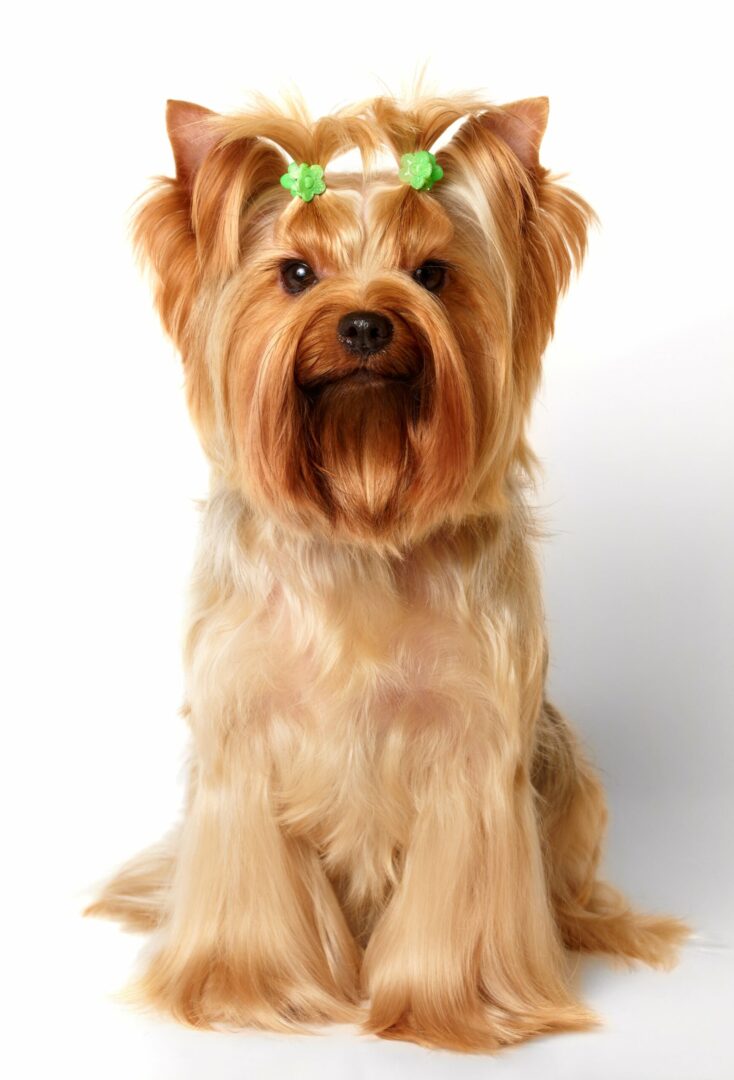
(3) Maltese – Small and energetic, they are little lion-hearted creatures that show no timid behaviors, though they are very small in size. Boldly white with the sweetest little faces, they can be kept cut short rather than elegantly long. They are also very bright dogs that take well to training and which live extremely long lives.
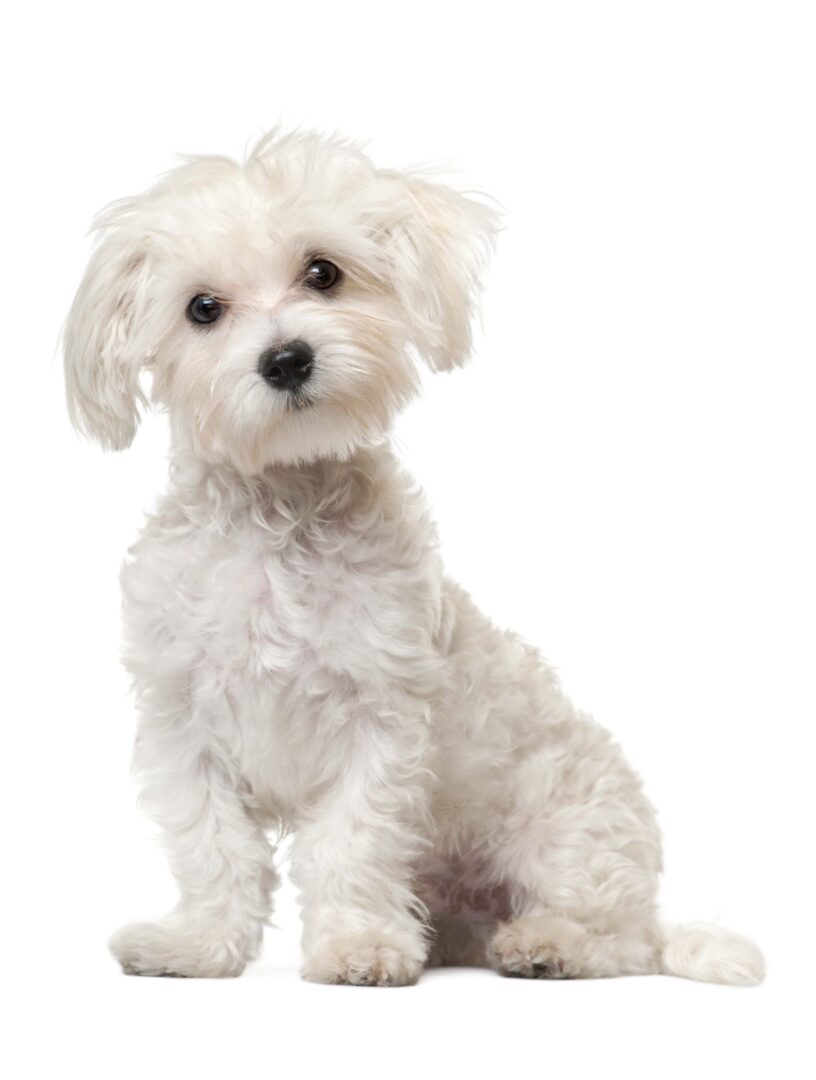
(4) Schnauzers – Here I go again with a childhood dog story, but it is impossible to resist. We had a miniature schnauzer named Fanny. She was wonderful, very protective, and crazy smart. And I can vouch for her – she really didn’t shed! We had her groomed because that beard is so awesome, but she really never deposited fur anywhere! You can choose from the mini, giant or standard and get the no shed benefits each time.
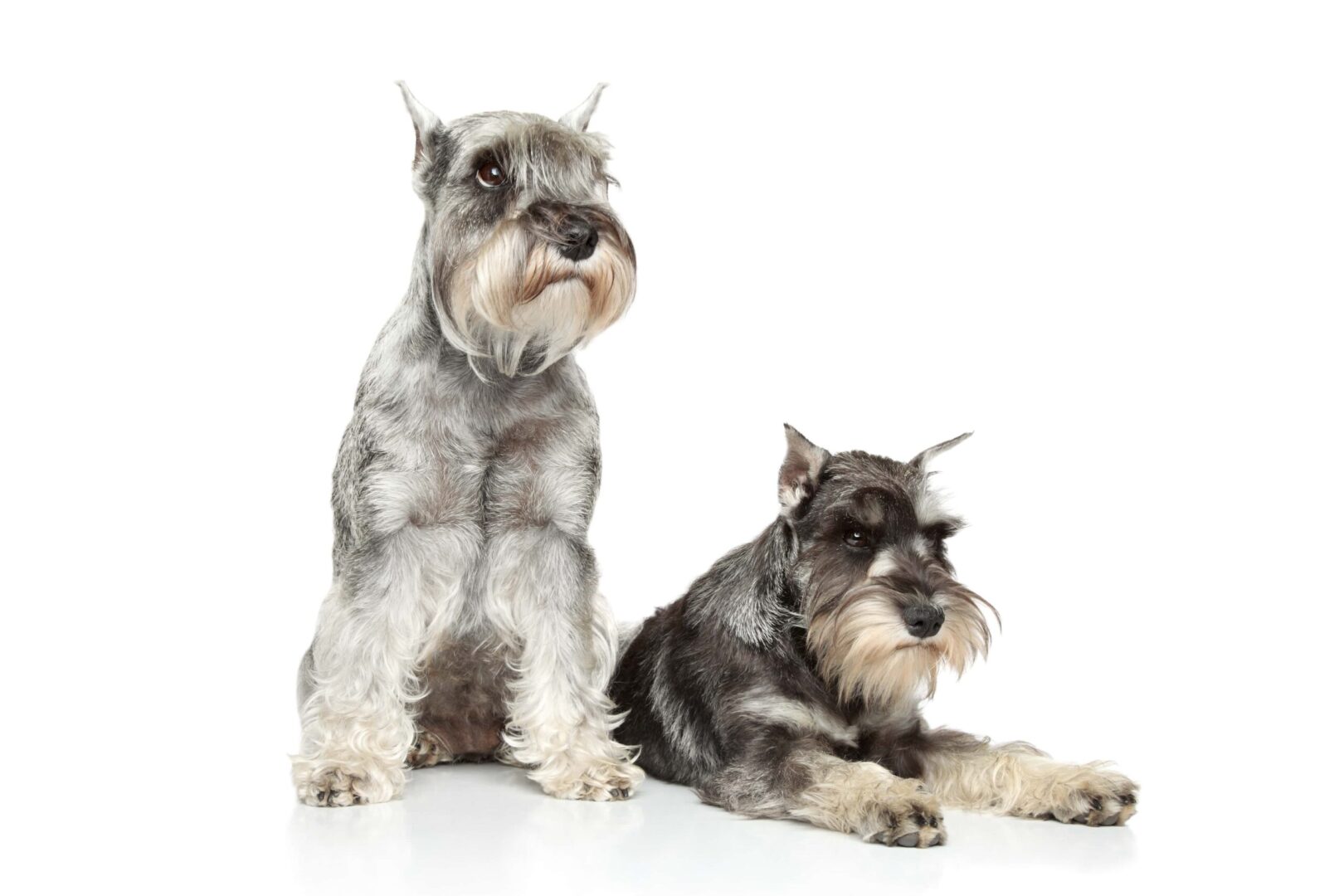
(5) Afghan hounds – Oh-so elegant and sweet, these lovely and graceful dogs seem like they’d be tremendous shedders, but the simple fact is that they don’t! They do need bathing and brushing on a regular basis, but they rarely lose fur or suffer problems with their coats.
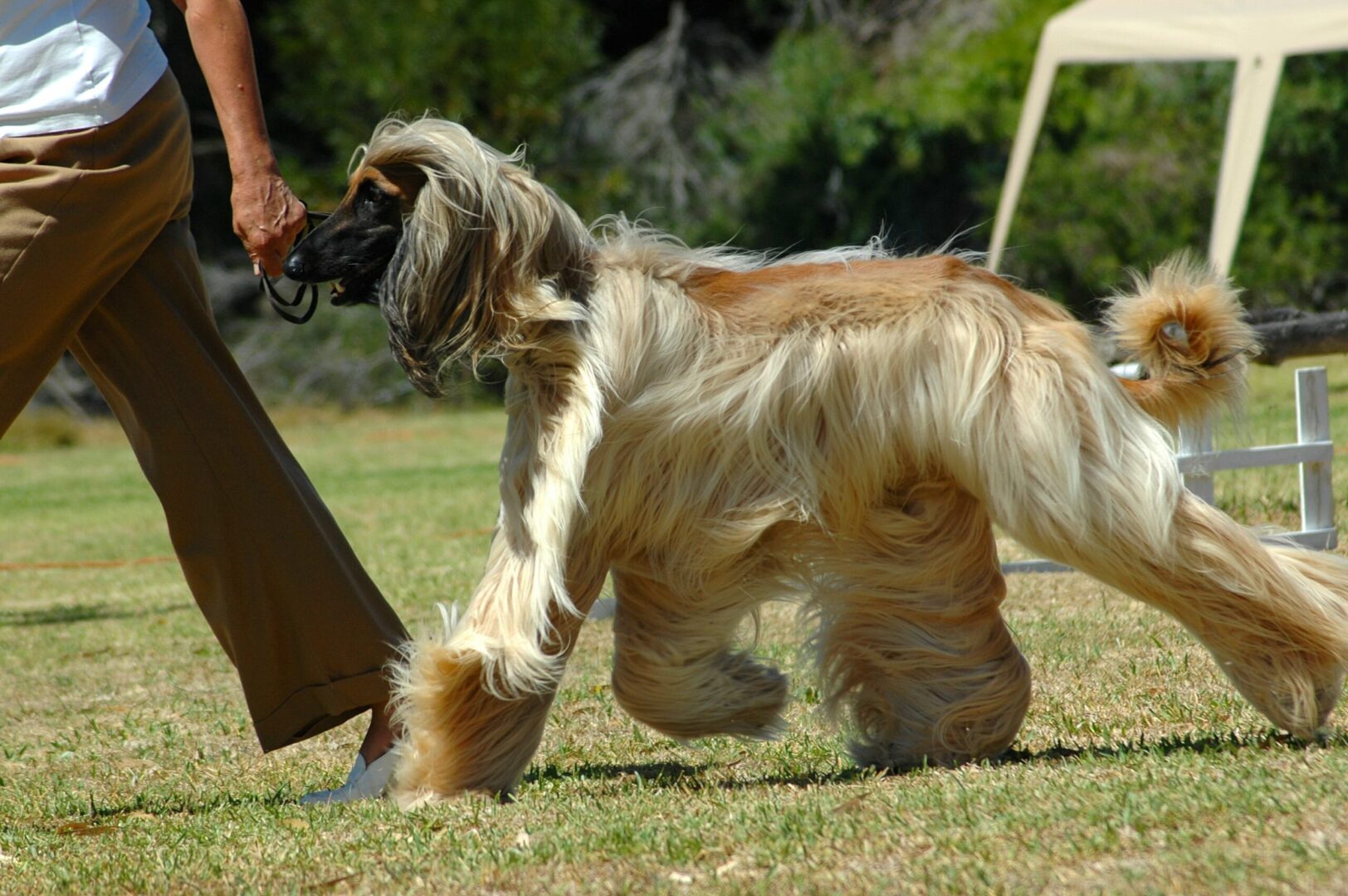
(6) German Pointers – The short hair and the wirehaired breeds are smart and easy to train, good looking and high energy creatures who also come with the bonus of shedding minimally all year round. They are dogs that need exercise, though, so be prepared to give them attention in the exercise department rather than the grooming.
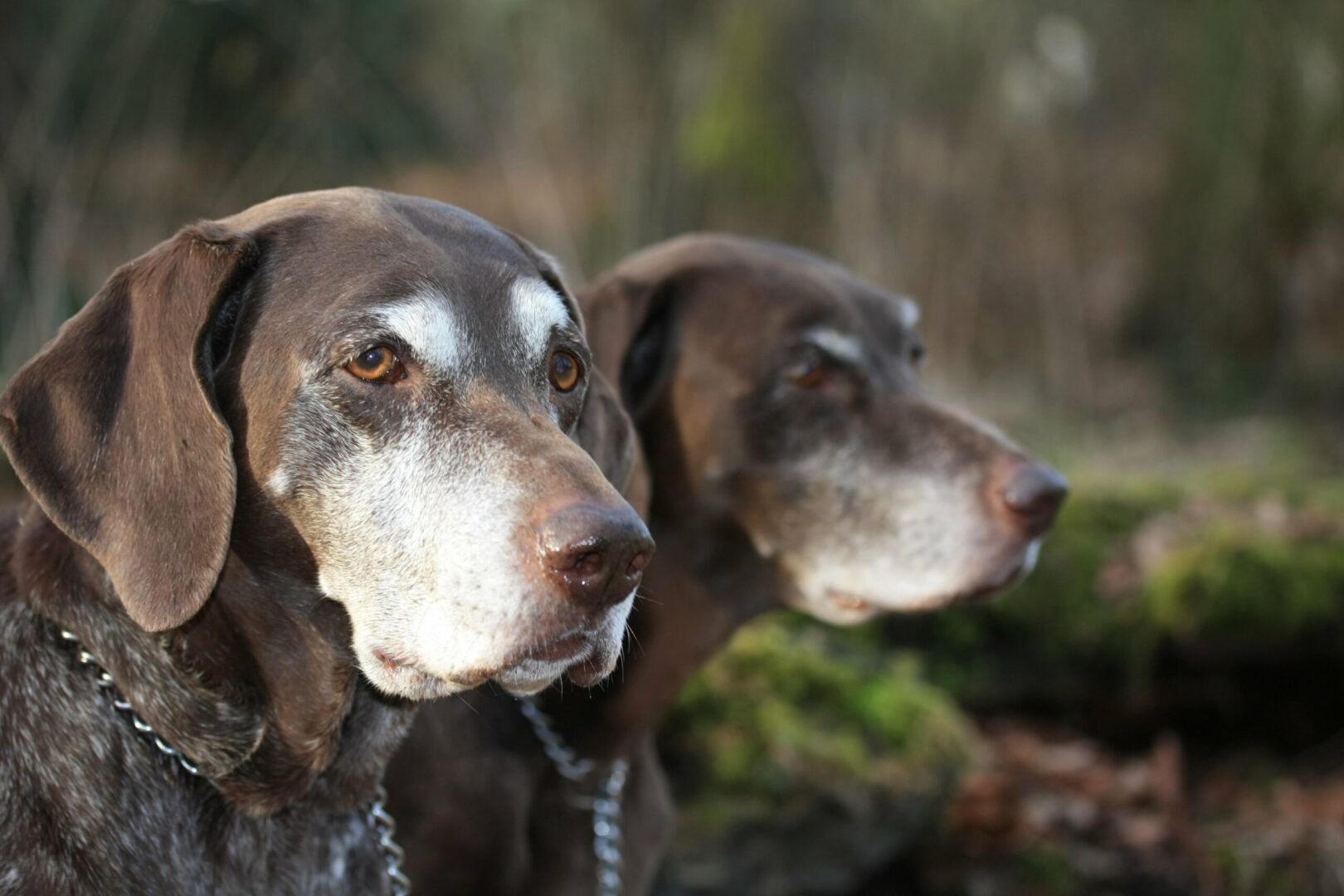
(7) American Hairless Terrier – If you like the face and build of a Jack Russell, but you want zero shedding, this one is for you. Authentically hairless, the dog will often have a spotted pattern to the skin, but no fur to speak of. They are super affectionate and cuddly, high energy, and even tempered, making them a great companion for those who have allergies.

(8) Xoloitzcuintli – Say it five times fast…I dare you! This ancient breed is incredibly attractive and comes in three sizes and can be hairless or short coated. They shed very little when they have hair, and their wonderful temperaments make them ideal for those who dread shedding or have dog allergies.

(9) Lagotto Romagnolo – Truffle hunting is the name of their game these days, though they were bred as water retrievers hundreds of years ago. They are few in number but gaining popularity for many reasons, one being their low to no shed traits. Adorable and bright, this is a great family dog if anyone has allergies.
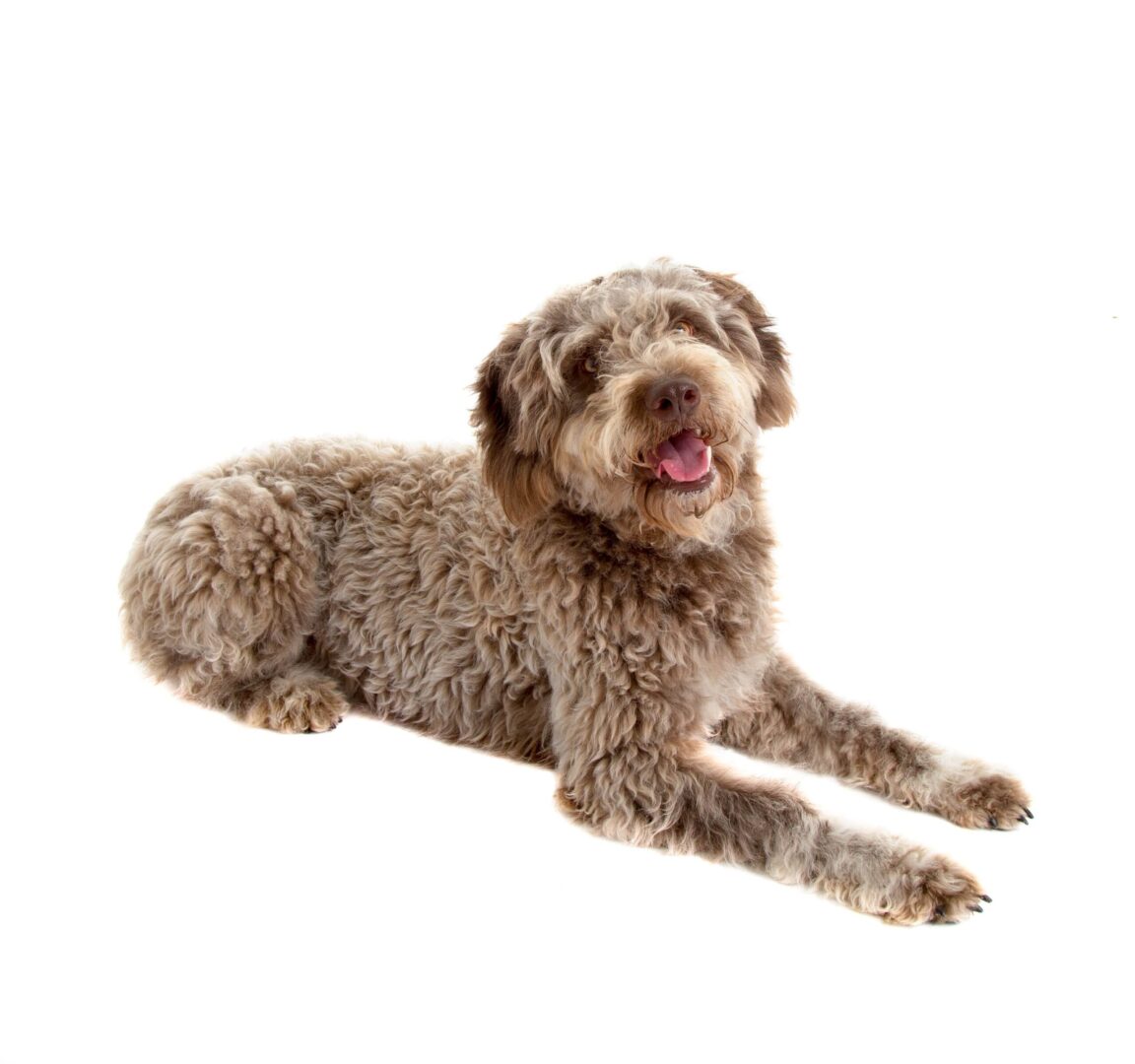
(10) Basenji – I love the looks of these boxy little dogs. They are usually liver and white in color with bright and super intelligent expressions. They are smart as a whip and require almost no maintenance or upkeep, but a word of warning is that they are so smart as to be very difficult to train. For example, they are often described as willful and as dogs that really do as they please!

(11) Poodles – Poodles in any size are known as non-allergenic. This is because people with actual dog allergies find that they can keep poodles without any issues. Whether you go full sized or miniature, or you even choose a breed mixed with a poodle (think Labradoodle, Goldendoodle, and so on), you’ll find a sweet tempered, fun loving, low or no shed, non-allergenic pal.
There you have 11 low or no shed dogs often described as hypoallergenic. If you are looking to adopt but hesitating because you don’t want to live with constant shedding and all of the cleaning it requires, these are the breeds to consider.
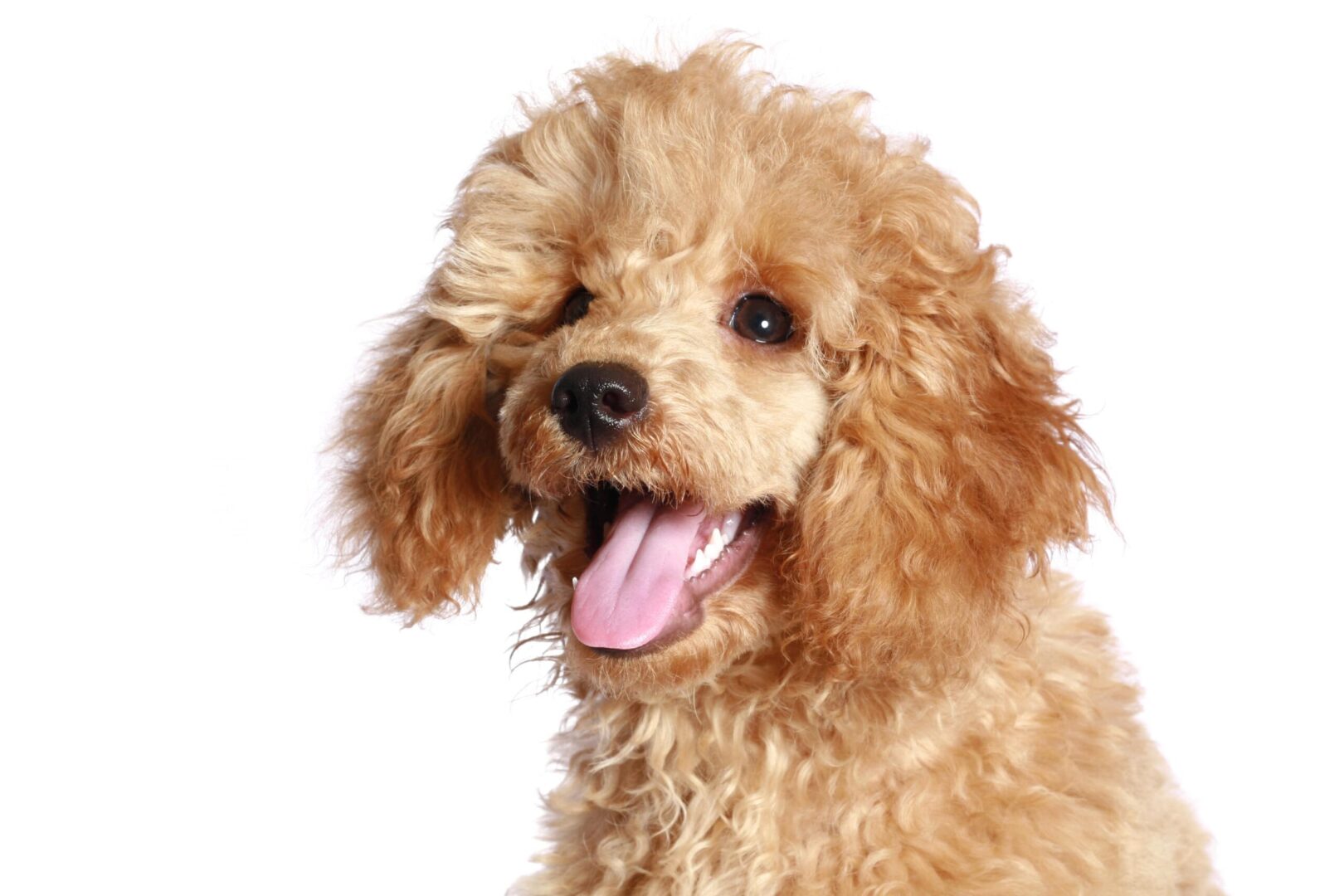
Winter is upon us, and that does not mean that your dog’s coat is going to head into hibernation. Instead, it is going to just keep on doing what fur does, and though it should remain dense and healthy until late winter, there are many reasons shedding might increase over the colder season. We’ve gone over the main reasons for hair loss or excessive shedding and what you can do about it. Get started with pre-winter grooming habits today and you’ll be on top of things if your dogs begin to shed a bit more over the winter or experience a blow out as the snows melt and the seasons turn.
Related Content:
7 Tips for Dealing with Shedding
5 Best Dog Hair Blowers
16 Best Dog Boards
Source
https://www.bustle.com/p/13-friendly-dog-breeds-that-dont-shed-9719176
https://www.akc.org/expert-advice/lifestyle/dog-breeds-that-dont-shed/
https://www.petcarerx.com/article/excessive-dog-shedding-when-you-should-worry/1449
https://www.angieslist.com/articles/why-does-my-dog-lose-its-hair-winter.htm
https://www.aaha.org/pet_owner/lifestyle/its-winter-why-is-my-pet-shedding-so-much.aspx

